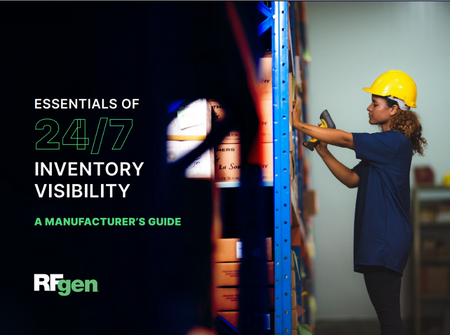Winning the Inventory Game: Proven Strategies to Dodge Stockouts and Overstocking
- Inventory/Warehouse
In the world of inventory management, stockouts and overstocking can be detrimental to business success. Not having the right amount of stock available leads to work stoppages, frustrated customers, lost sales, and increased costs.
To stay ahead in today’s highly competitive market, organizations must adopt smart strategies for avoiding inventory stockouts and overstocking. However, maintaining optimal stock levels is easier said than done—and yet, many companies have found ways to do it. But how?
In this article, we’ll dive into proven strategies to help you maintain the perfect inventory balance and keep your customers coming back for more.
Understanding Stockouts, Understocking, and Overstocking
Before we get into specific strategies, it’s important to first understand the difference between stockouts and overstocking, and why maintaining the right stock levels is essential.
Stockouts
Stockouts occur when the warehouse runs out of a particular item. For manufacturers, the quantity has reached zero and the company is unable to fulfill an order or production requirement.
For any business, retail or otherwise, the result is the same: lost sales opportunities, productivity, and continuity. Not only can stockouts interrupt efficient operations, they can also harm contractual obligations and damage your brand’s reputation.
Stockouts often happen due to understocking.
Understocking
Understocking, on the other hand, happens when a company keeps too little inventory on hand. This translates to insufficient inputs for production needs and customer orders.
Some companies maintain too few quantities of items as a way to control costs, but this is more of a shortcut than an effective stocking strategy.
Overstocking
Overstocking is the opposite of understocking. Overstocking occurs when a business has too much inventory on hand. Whether the company is stockpiling emergency supplies “just in case” or is over-ordering due to suboptimal inventory visibility, overstocking ties up valuable capital while increasing overhead costs.
Excess stock costs more to store and manage. Certain products, like food or sensitive electronics, risk expiration or obsolescence. Meanwhile, a sudden shift in demand can quickly turn all that extra inventory into an outright loss.

5 Ways to Reduce an Outsized Inventory
READ NOW »The Art of Balancing Inventory: Stockouts vs. Overstocking
Maintaining optimal stock levels is a delicate balancing act. Avoiding stockouts and overstocking is crucial for efficient inventory management and maintaining customer satisfaction.
That said, most companies struggle with keeping the right amount of items available. According to findings in the RFgen Digital Inventory Report, 44% of inventory-handling companies struggle with overstocking and understocking.
This may have something to do with the fact that 40% of respondents also find inaccurate inventory data to be a significant challenge—that’s no coincidence.
Let’s look at proven strategies to accomplish both.

Got Inventory Problems? Get Solutions.
LEARN MORE »Strategies for Avoiding Inventory Stockouts and Overstocking
1. Accurate Demand Forecasting
One of the most effective strategies for avoiding stockouts and overstocking is to accurately forecast customer demand. By analyzing historical sales data, market trends, and seasonal variations, you can better predict future demand and adjust inventory levels accordingly.
The trick, of course, is having a way to forecast demand effectively. Technology offers the ideal solution. Using enterprise resource planning (ERP) software is a big step in the right direction.
However, you can’t accurately forecast demand if your prediction models are based on bad data. So, to complete the picture, consider expanding your ERP’s capabilities with mobile software that enhances visibility and material handling with high-quality data collection.
2. Real-Time Inventory Tracking
Implementing a real-time inventory tracking system enables live monitoring of stock levels. In turn, this enables informed decision-making about when to reorder products. This can help avoid stockouts while also minimizing the risk of overstocking.
Mobile inventory solutions help ensure stock levels are always up-to-second accurate—and not days behind the reality on the shelves. Automation further assists with replenishment and ordering. Setting thresholds for automatic replenishment tasks and re-ordering are essential for the continuous flow of materials in a fast-paced environment.
3. Automate Manual Processes
If you haven’t caught on already, technology plays a big role in mitigating stockouts and stockpiling. Manual processes are no exception.
Manual inventory processes, such as using paper tickets, spreadsheets, or human memory (“tribal knowledge”) are opaque. You can’t always tell what you have, in what locations, and in what quantities.
Automating manual handling procedures wherever possible is a long-proven strategy for ensuring appropriate stock levels. In addition to monitoring item movements, automation can alleviate process bottlenecks.
For example, mobile barcoding automates receipts, put-away, cycle counts, and order picking, generating 40%-400% faster speeds.

The Manufacturer’s Guide to 24/7 Inventory Visibility
DOWNLOAD NOW »4. Safety Stock and Reorder Points
Establishing safety stock levels and reorder points can help you avoid stockouts without overstocking. Safety stock acts as a buffer against demand fluctuations, while reorder points trigger new orders before stock levels become critically low (a task software can automate).
Unlike overstocking, which is often a side effect of inefficient inventory control practices, safety stock is a strategic decision to hold extra quantities as a buffer against fluctuations in supply and/or demand.
But like overstocking, safety stock is prone to many of the same issues. Therefore, oversight and analysis are needed to prevent being drawn into hoarding materials that will degrade, expire, or lose value while in storage.
Mobile inventory solutions can provide that oversight, as well as the underlying automation for warehouse efficiency.
5. Supplier Relationship Management
While technology offers a lot of solutions to the challenges of stocking, the human element can’t be ignored. Seek to build strong relationships with suppliers. By working closely with suppliers, businesses can ensure timely deliveries, negotiate better terms, and quickly address any supply chain disruptions before it’s too late.
6. Just-in-Time (JIT) Inventory Management
Just-in-Time inventory management is a methodology that involves ordering products only as they are needed. JIT allows warehouses to run lean and keep on-hand quantities to a minimum, making overstock an impossibility.
While a winning solution for cost optimization, JIT—like all lean methodologies—can be potentially fragile under duress, as we saw during COVID-19. Therefore, JIT inventory management may not be for everyone.
To get the benefits of JIT inventory control while mitigating risk, companies must closely monitor customer demand and lead times. Here again, automation and inventory transparency are key.

Mobile inventory in action: JIT distributor Myers Tire Supply gains real-time oversight
READ THE FULL STORY »7. Data Analytics and Inventory Optimization
Leveraging data analytics is another way to stave off stockouts and overstocking. By analyzing data, businesses can gain valuable insights into their inventory management processes, both in the warehouse and on the shop floor—as well as in field services and maintenance.
Analytics offer actionable information on how much of each SKU to keep stocked and optimal reorder points.
Having reliable data to work from will be essential for informed decision-making. Ideally, automated data collection will take place from multiple sources, such as IoT devices, industrial computers (PLCs), scales, RFID scanners, and workers equipped with mobile barcoding handhelds.

Data Analytics: The Secret Ingredient to Efficient Inventory Management
READ NOW »Implementing Inventory Management Best Practices
Businesses wishing to avoid stockouts and overstocking should consider implementing a combination of these strategies and inventory best practices:
- Regularly review and update demand forecasts
- Invest in inventory management software and real-time tracking systems
- Leverage automation to circumvent human error
- Set appropriate safety stock levels and reorder points
- Establish and maintain strong supplier relationships
- Consider adopting a JIT approach to inventory management
- Leverage data analytics for continuous improvement
FAQs
A: Accurate demand forecasting is crucial for avoiding stockouts and overstocking, as it enables businesses to predict future customer needs and maintain optimal inventory levels. This helps minimize lost sales opportunities, reduce holding costs, and improve overall profitability.
Q: How common is the problem of overstocking or understocking?
A: 44% of material-handling companies cite over/understocking as a significant challenge in inventory management, according to RFgen’s Digital Inventory Report.
Q: How can real-time inventory tracking help in avoiding stockouts and overstocking?
A: Real-time inventory tracking allows businesses to monitor stock levels continuously and make informed decisions about when to reorder products. This timely information can help avoid stockouts while minimizing the risk of overstocking.
Q: What is the role of supplier relationship management in preventing stockouts and overstocking?
A: Supplier relationship management is essential for preventing stockouts and overstocking, as strong relationships with suppliers can ensure timely deliveries, better negotiation terms, and quicker resolution of supply chain disruptions.
Q: How can Just-in-Time (JIT) inventory management help in avoiding stockouts and overstocking?
A: JIT inventory management involves ordering products only as they are needed, which reduces the risk of stockouts and overstocking. Although this approach requires close monitoring and planning, it can lead to lower carrying costs, less waste, and more efficient inventory management.
Q: Why is data analytics important for inventory optimization?
A: Data analytics is important for inventory optimization because it provides businesses with valuable insights into their inventory management processes. By analyzing data collected from various sources, businesses can identify trends, optimize inventory levels, and make more informed decisions about when to reorder products.
Q: What are some best practices for implementing inventory management strategies?
A: Some best practices for implementing inventory management strategies include regularly reviewing and updating demand forecasts, investing in inventory management software and real-time tracking systems, automating manual processes, establishing strong supplier relationships, setting appropriate safety stock levels and reorder points, adopting a JIT approach to inventory management, and leveraging data analytics for continuous improvement.
Win the Competitive Race by Optimizing Stock Levels
For companies seeking to streamline inventory management and reduce costs, avoiding inventory stockouts and overstocking is an important step. Given their negative impact, businesses that rely on a steady stream of inventory must implement strategies to prevent them from happening. Technologies that enable live, up-to-the-second visibility and control remain a proven means of ensuring material availability throughout the supply chain. Organizations that invest in such inventory solutions can overcome inventory control challenges, trim excess spend, and position their operations for future success.




